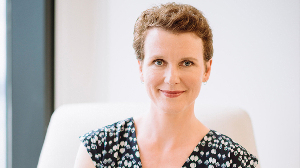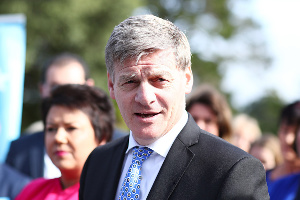
She was commenting on the latest ANZ Business Outlook Survey, which shows business confidence this month was unchanged from February at -43, and firms’ expected own-activity was flat at -9.
“Firms are wary but hanging in there,” Zollner says.
“So far, though it’s early days, you’d have to say things do look like a soft landing – activity indicators are subdued but off the floor, labour market tightness is starting to shift, and inflation and cost indicators are gradually easing.”
Zollner says that’s not to say it’s an easy environment – expected profitability is under pressure as firms navigate still-high cost inflation and uncertain future demand.
“The winter could expose a few more rocks as the wave of tourists depart. But for now, the slowdown is looking broadly in line with the Reserve Bank’s intentions.”
A net 83% of firms in the retail sector expected to raise their prices in the next three months – up 12 points on February’s numbers, but still well down from a peak of 96% nine months ago, Zollner says.
While pricing intentions also rose for construction – off the back of cyclone impacts – and agriculture, they fell for manufacturing and services.
“Businesses say the biggest issue they face is finding skilled labour. Although it has become marginally easier, it was still the largest issue, providing plenty of incentive to try to poach staff from the firm next door,” Zollner says.
Problems related to inflation – wage and non-wage costs – also continued to rate highly.
OCR expectations
Zollner says inflation needs to drop soon if we want to avoid more Reserve Bank interest rate rises.
The main trading banks are expecting the Reserve Bank to lift the Official Cash Rate by another 25 basis points to 5% at this week’s monetary policy review.
Westpac economists Kelly Eckhold and Michael Gordon say this has been more or less fully priced into the market, so the decision itself is unlikely to cause a stir on the day.
They say where there will be more interest is in what the RBNZ signals about future moves.
“There’s a growing sense that we’re nearing the peak for this cycle, if not all the way there yet,” Gordon says.
“Given the lingering risks around high inflation, it will make sense for the RBNZ to retain the option of further rate hikes in the months ahead.
“Whether it actually ends up delivering on that will depend on how some recent developments play out,” says Gordon
Westpac is forecasting a peak of 5% for this cycle, although it acknowledges that the risks are skewed towards a higher peak than a lower one.
The recent big shocker has been GDP down 2% on what the RBNZ had assumed.
However, there are other developments that the RBNZ will need to weigh up, Gordon says.
“The first is the impact of Cyclone Gabrielle and the subsequent recovery. In February the RBNZ noted that the rebuild – likely to be in the billions of dollars spread over a few years – would add to economic activity and potentially to inflation pressures. But at that point it was too early to quantify the impact on monetary policy. That will probably remain the case for the April policy review and be put to one side until after the government’s May budget.”
The second issue, Gordon says, is heightened concern about the global banking sector in recent weeks. “No-one can say for certain whether the handful of bank failures so far is the start of something bigger, and the memories of the global financial crisis are still fresh in many people’s minds.
“On the other hand, the authorities have taken strong and proactive measures to preserve financial stability that seem to have been quite effective so far,” he says.
Regardless of where the OCR peaks in this cycle, Gordon says interest rates will likely need to stay high for some time, until inflation is clearly back on a path towards the 1-3% target range.




Comments
No comments yet.
Sign In to add your comment